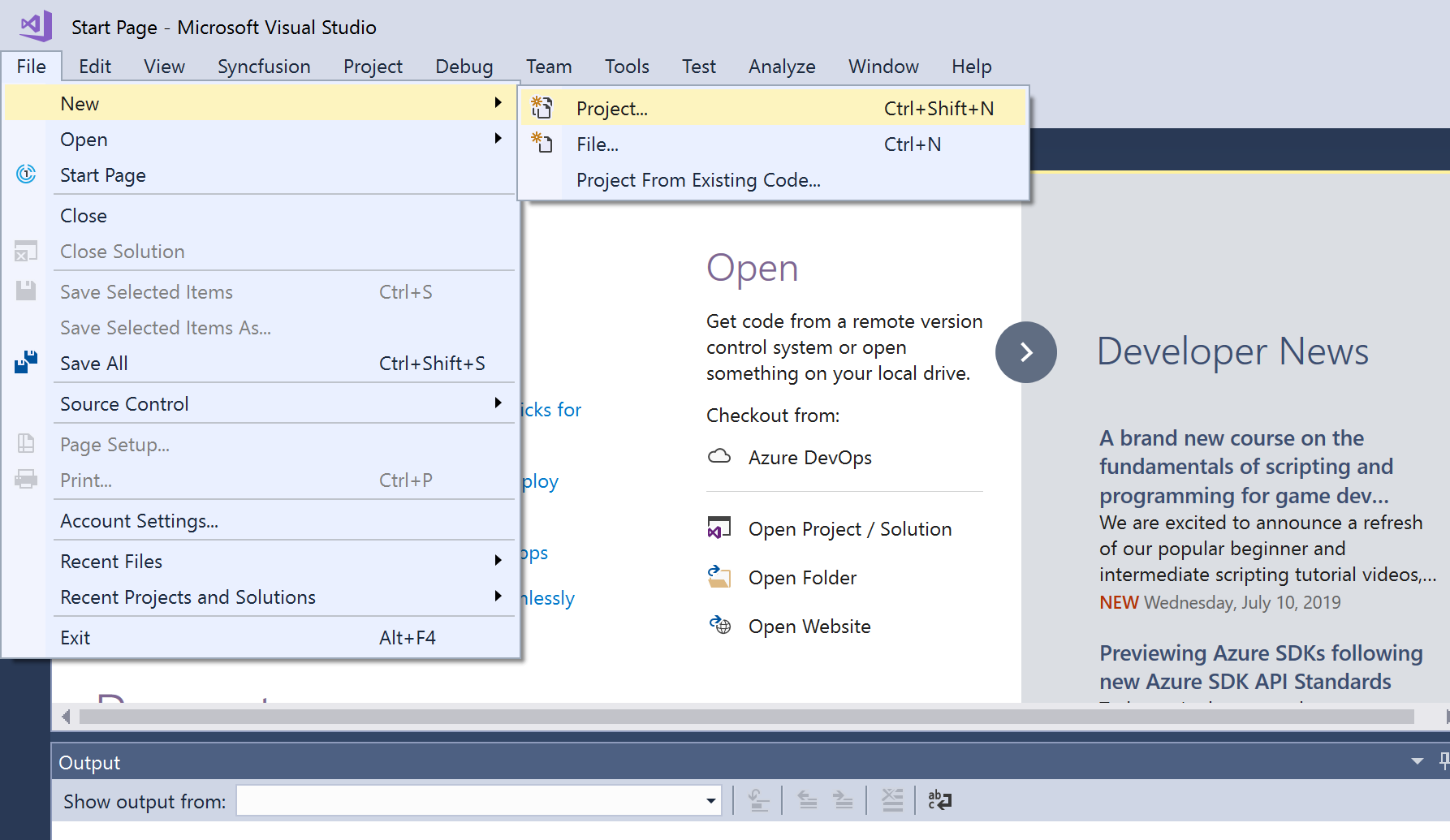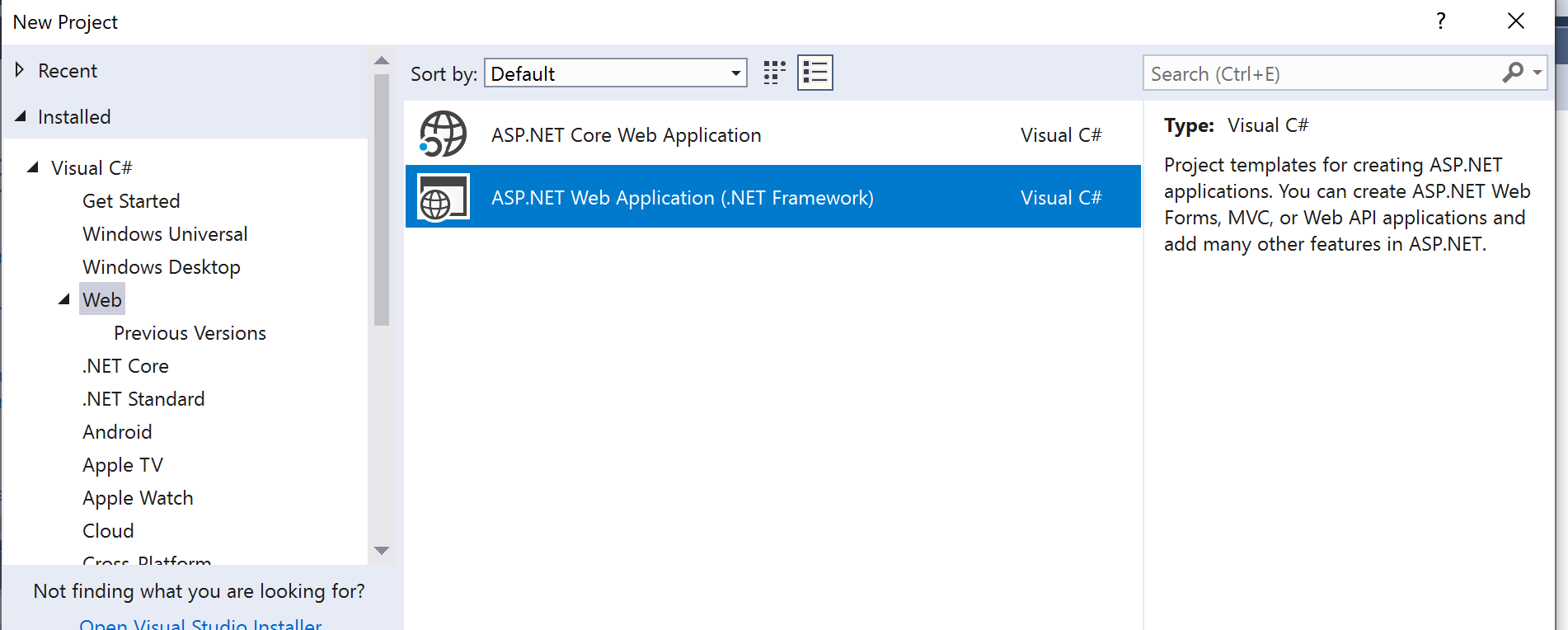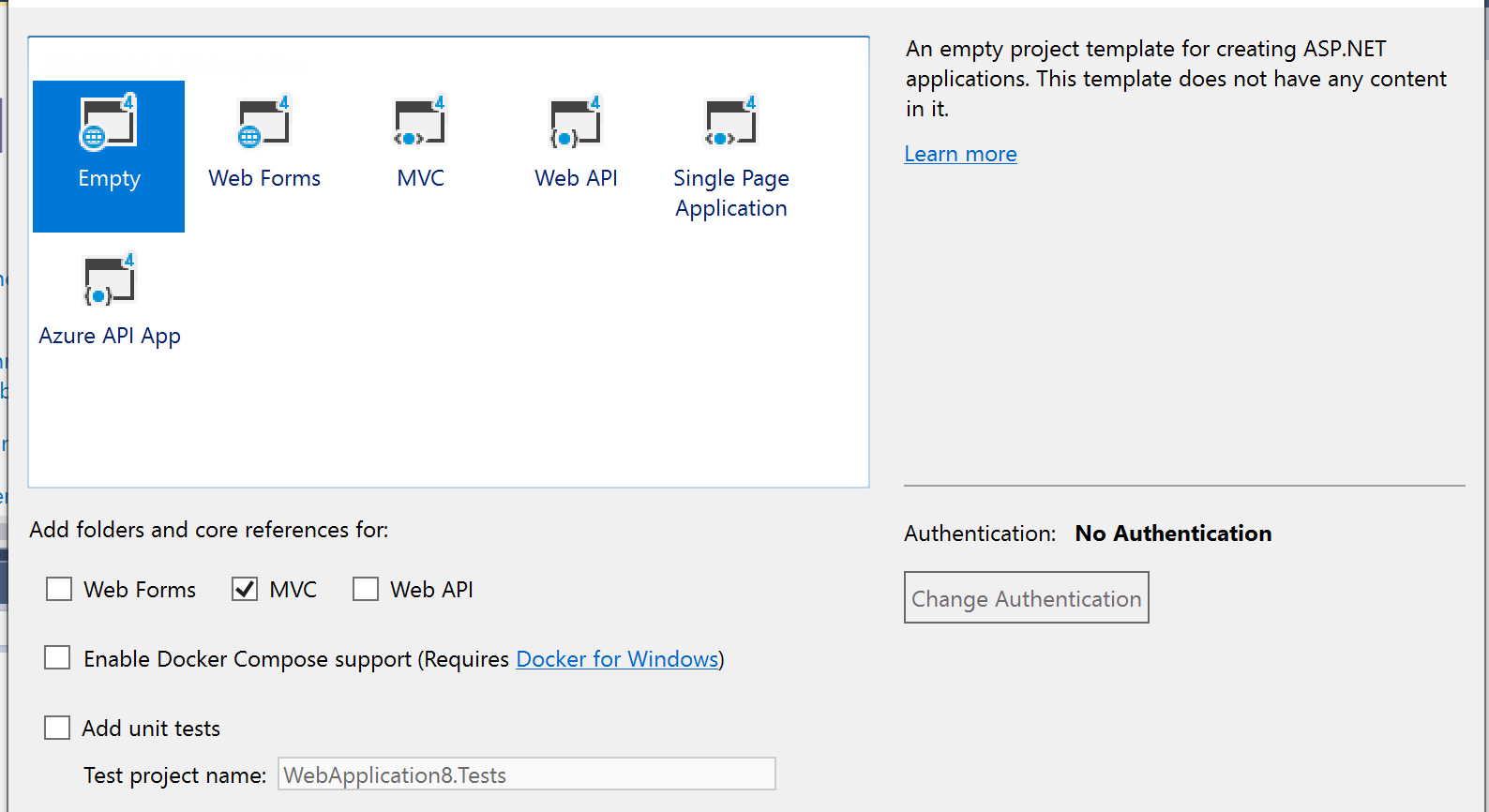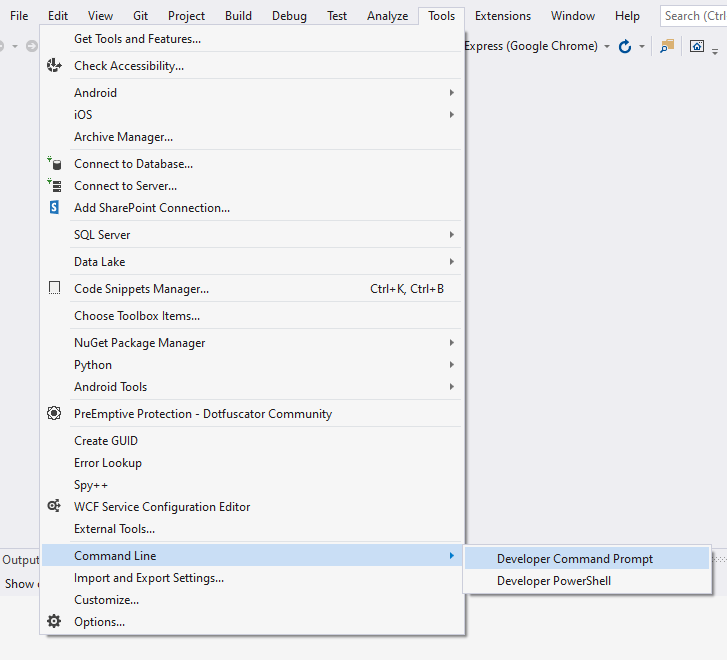Getting Started with Angular CLI as Front end in ASP.NET MVC
This document explains how to create an ASP.NET MVC framework with an Angular CLI project as the front end and Syncfusion EJ2 Angular components.
Prerequisite
- .Net Framework 4.5 and above
- ASP.NET MVC 5
- Visual Studio 2017 and above
- NodeJs
- Angular CLI
Create ASP.NET MVC Web Application
Create a new ASP.NET MVC Web application using the project template.
- Choose File > New > Project in the Visual Studio menu bar.

- Select Visual C# and Web in the drop-down.
- Select
ASP.NET Web Application (.NET Framework)and change the application name, and then click OK.

- Select
MVCas a project template and then click OK. Now the application is created.

Create Angular CLI Application
- Open the
Developer Command Promptfrom Visual Studio as shown in the following image.

- Create Angular CLI application using the
ng new ClientAppcommand as shown in the following image.

- Navigate to the ClientApp directory using the
cd ClientAppcommand.

- Integrate the Syncfusion Angular components as described in the Getting Started with Angular CLI documentation.
- Change the production build
outputPathinangular.jsonfile as../Scripts/ClientApp.
"projects": {
"ClientApp": {
"projectType": "application",
"schematics": {},
"root": "",
"sourceRoot": "src",
"prefix": "app",
"architect": {
"build": {
"builder": "@angular-devkit/build-angular:browser",
"options": {
"outputPath": "../Scripts/ClientApp",Configuring ASP.NET MVC Application
For Building Angular Application using MS Build
Installing and building the Angular application can be automated every time when the MVC application is built by changing MS Build configuration in .csproj as shown in the following code sample.
<PropertyGroup>
<TypeScriptCompileBlocked>true</TypeScriptCompileBlocked>
<TypeScriptToolsVersion>Latest</TypeScriptToolsVersion>
<IsPackable>false</IsPackable>
<SpaRoot>ClientApp\</SpaRoot>
<DefaultItemExcludes>$(DefaultItemExcludes);$(SpaRoot)node_modules\**</DefaultItemExcludes>
<BuildServerSideRenderer>false</BuildServerSideRenderer>
</PropertyGroup>
<ItemGroup>
<!-- Don't publish the SPA source files, but do show them in the project files list -->
<Content Remove="$(SpaRoot)**" />
<None Remove="$(SpaRoot)**" />
<None Include="$(SpaRoot)**" Exclude="$(SpaRoot)node_modules\**" />
</ItemGroup>
<Target Name="BeforeBuild" AfterTargets="ComputeFilesToPublish">
<!-- As part of publishing, ensure the JS resources are freshly built in production mode -->
<Exec WorkingDirectory="$(SpaRoot)" Command="npm install" />
<Exec WorkingDirectory="$(SpaRoot)" Command="npm run build -- --prod -- --base-href /" />
<Exec WorkingDirectory="$(SpaRoot)" Command="npm run build:ssr -- --prod" Condition=" '$(BuildServerSideRenderer)' == 'true' " />
<!-- Include the newly-built files in the publish output -->
<ItemGroup>
<DistFiles Include="$(SpaRoot)dist\**; $(SpaRoot)dist-server\**" />
<DistFiles Include="$(SpaRoot)node_modules\**" Condition="'$(BuildServerSideRenderer)' == 'true'" />
<ResolvedFileToPublish Include="@(DistFiles->'%(FullPath)')" Exclude="@(ResolvedFileToPublish)">
<RelativePath>%(DistFiles.Identity)</RelativePath>
<CopyToPublishDirectory>PreserveNewest</CopyToPublishDirectory>
<ExcludeFromSingleFile>true</ExcludeFromSingleFile>
</ResolvedFileToPublish>
</ItemGroup>
</Target>Configure MVC Bundle with Angular Production Scripts
Configure the MVC bundle with Angular production script and style files in App_Srart\BundleConfig.cs as shown in the following code sample.
using System.Web;
using System.Web.Optimization;
namespace SyncfusionAngularASPNETMVC
{
public class BundleConfig
{
// For more information on bundling, visit https://go.microsoft.com/fwlink/?LinkId=301862
public static void RegisterBundles(BundleCollection bundles)
{
bundles.Add(new Bundle("~/bundles/clientapp").Include(
"~/Scripts/ClientApp/runtime.*",
"~/Scripts/ClientApp/polyfills.*",
"~/Scripts/ClientApp/main.*"));
bundles.Add(new StyleBundle("~/Content/clientapp").Include(
"~/Scripts/ClientApp/styles.*"));Include Angular Production Scripts in MVC
Include the Angular production scripts and style files in the Views/Shared/_Layout.cshtml.
<!DOCTYPE html>
<html>
<head>
<meta charset="utf-8" />
<meta name="viewport" content="width=device-width, initial-scale=1.0">
<title>@ViewBag.Title - My ASP.NET Application</title>
<base href="/" />
@Styles.Render("~/Content/css")
@Styles.Render("~/Content/clientapp")
@Scripts.Render("~/bundles/modernizr")
</head>
<body>
@RenderBody()
@Scripts.Render("~/bundles/jquery")
@Scripts.Render("~/bundles/bootstrap")
@Scripts.Render("~/bundles/clientapp")
@RenderSection("scripts", required: false)
</body>
</html>Include the <app-root> tag in the Views/Home/index.cshtml.
@{
ViewBag.Title = "Home Page";
}
<app-root></app-root>Run the Application
Build and run this application from Visual Studio and the component will be rendered.

Note: For your convenience, we have prepared an ASP .NET MVC and Angular CLI Sample.